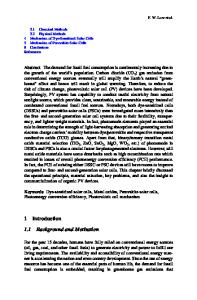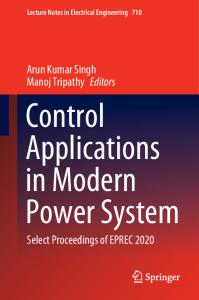Electrophoretic deposition of nanostructured hematite photoanodes for solar hydrogen generation
- PDF / 460,204 Bytes
- 7 Pages / 584.957 x 782.986 pts Page_size
- 57 Downloads / 339 Views
this study, hematite nanoparticles (a-Fe2O3 NPs) were synthesized by hydrothermal method, with morphologies (e.g., nanorhombohedra, nanobars, and nanospheres) facilely tuned by changing the concentrations of glycol in the hydrothermal solution. Then a low-cost and scalable electrophoretic deposition method was used to fabricate nanostructured a-Fe2O3 films as photoanodes for solar hydrogen generation. It was found that the film of a-Fe2O3 nanobars showed the highest photoelectrochemical (PEC) performance compared to those films of a-Fe2O3 nanorhombohedra and nanospheres, with photocurrent density reaching 0.7 mA/cm2 at 0.6 V versus Ag/AgCl. This PEC improvement may be related to the smaller diameters of nanobars shortening the carrier migration distance, reducing the recombination rate of photo-generated carriers. Moreover, all the a-Fe2O3 films showed much higher PEC performances with surface modified by Sn41, mainly due to the reduced surface charge recombination, as the Sn41 doped overlayer passivated surface defects. For the film of a-Fe2O3 nanobars, the photocurrent density was increased by 100%, reaching 1.4 mA/cm2 at 0.6 V versus Ag/AgCl.
I. INTRODUCTION
Photoelectrochemical (PEC) water splitting has become one of the most important ways to solve the global problems of energy shortage and environmental pollution through converting solar energy into chemical energy stored in hydrogen. Nowadays there are many different materials used as electrodes for PEC water splitting such as TiO2,1 WO3,2 ZnO3, and a-Fe2O3,4 etc. Among them, hematite (a-Fe2O3) has been considered to be one of the excellent PEC water splitting electrodes due to its attractive properties such as earth abundance, low cost, and excellent chemical stability.5 Moreover, a-Fe2O3 exhibits suitable energy band gap of ;2.1 eV for efficient utilization of the large portion of visible light in solar spectrum. However, there are some inevitable shortcomings for a-Fe2O3 acting as photoelectrode materials, mainly attributed to the poor electronic conductivity, high charge recombination rate, and short hole diffusion length.6 Therefore, in the past years, numerous efforts have been devoted to improve the charge transfer and separation ability of a-Fe2O3 for the enhanced PEC conversion efficiency. As one of the most effective approaches to improve the PEC properties of a-Fe2O3 photoanodes, doping foreign Contributing Editor: Heli Wang a) Address all correspondence to this author. e-mail: [email protected] DOI: 10.1557/jmr.2016.37 J. Mater. Res., Vol. 31, No. 11, Jun 14, 2016
http://journals.cambridge.org
Downloaded: 16 Jun 2016
elements into a-Fe2O3 has been widely adopted to promote charge transfer ability by increasing electronic conductivity. So far, a variety of metal ions, Zn,7 Ti,8 Sn,9 etc., have been used for the doping modification of a-Fe2O3 electrodes, leading to greatly enhanced PEC performances. Kumari et al.10 and Glasscock et al.11 have shown that the Ti41 doping can effectively improve the carrier migration rate and suppress the charge
Data Loading...











